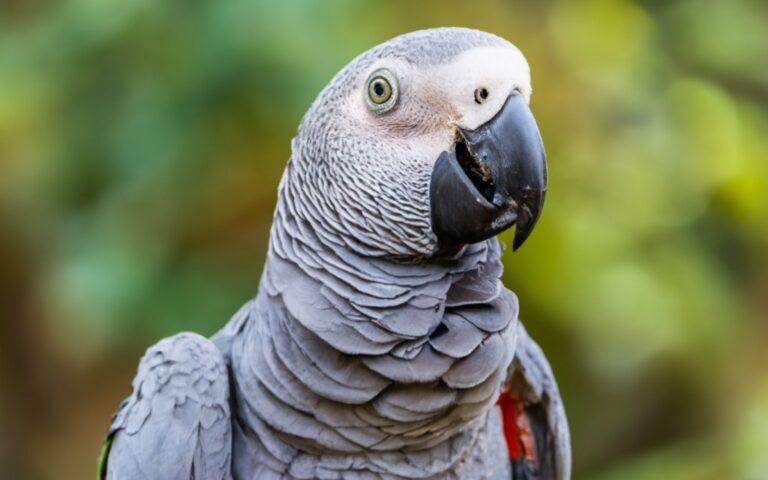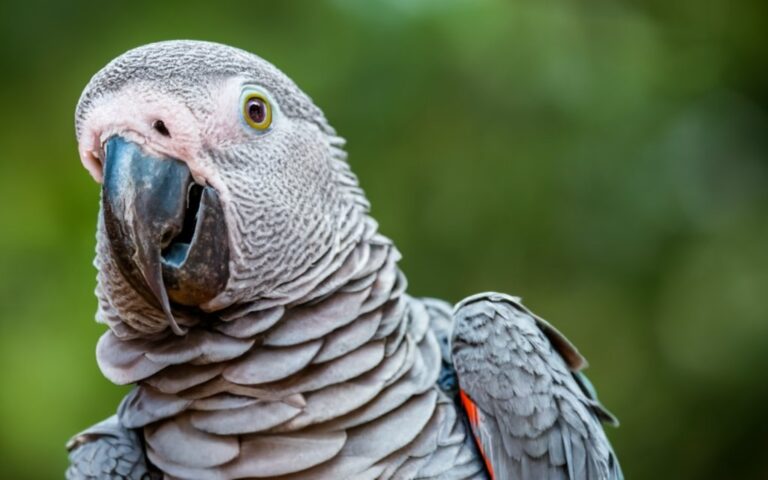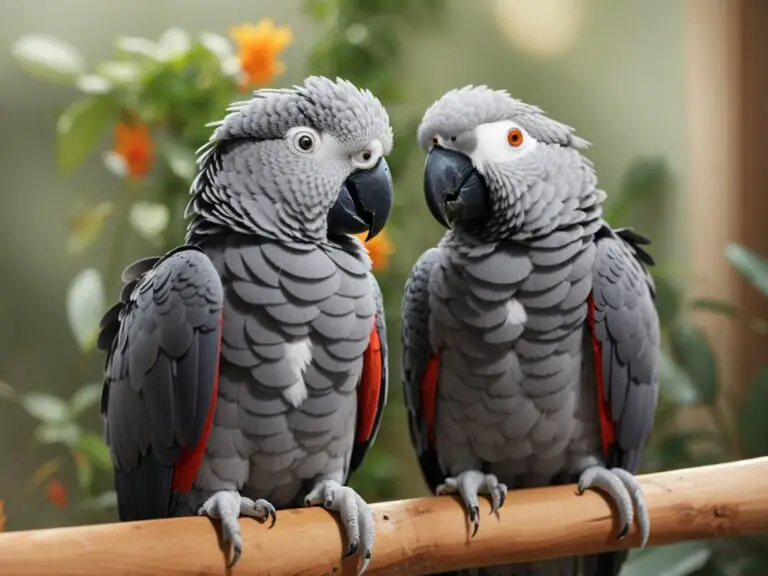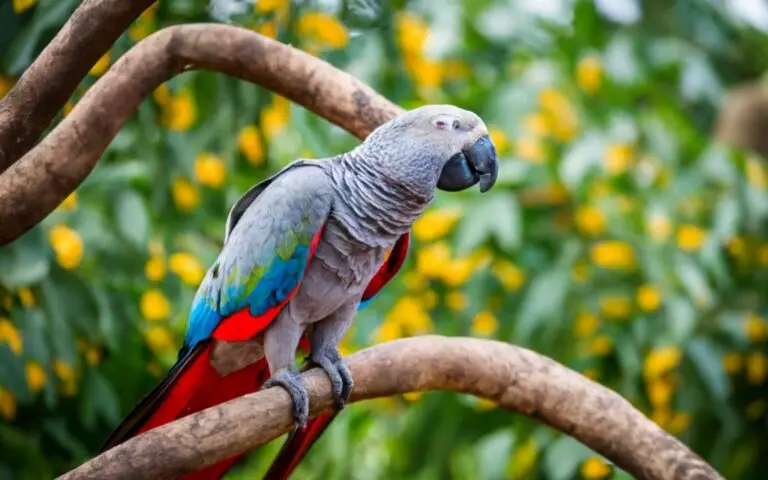What Is The Role Of African Grey Parrots In Rainforest Regeneration?
Key Takeaways:
- African Grey Parrots play a vital role in rainforest regeneration by dispersing seeds across long distances.
- These parrots have a diverse diet that includes a variety of fruits, resulting in the dispersal of a wide range of plant species.
- Their ability to crack open hard seeds contributes to the survival and growth of numerous plant species in the rainforest.
- The decline in African Grey Parrot populations poses a threat to rainforest regeneration and ecosystem stability.
Are you familiar with the saying “All creatures great and small”?
Well, when it comes to the African Grey Parrot, their impact on rainforest regeneration is no small feat.
These remarkable birds, with their stunning plumage and charismatic personality, play a crucial role in the delicate balance of rainforest ecosystems.
From their habitat to their diet and behavior, African Grey Parrots possess unique qualities that make them exceptional seed dispersers.
In this article, we will dive deep into the world of these incredible birds, exploring their role in rainforest regeneration and the conservation efforts aimed at protecting them.
So, let’s spread our wings and embark on this fascinating journey together!
| African Grey Parrots | Rainforest Regeneration |
|---|---|
| Seed dispersal | African Grey Parrots play a crucial role in rainforest regeneration by dispersing seeds. They have strong beaks that can crack open hard-shelled fruits, allowing them to eat the pulp and then drop or hoard the seeds elsewhere. |
| Long-distance movements | These parrots are known for their extensive movements across large areas. While in search of food, they can travel long distances, carrying seeds with them. This helps in spreading plants and increasing biodiversity in different parts of the rainforest. |
| Vocalizations | African Grey Parrots are highly vocal and can imitate a wide range of sounds, including the calls of other animals and even chainsaws. This vocal ability helps them attract and communicate with other parrots, promoting social cohesion and improving breeding success. |
| Conservation status | African Grey Parrots are threatened by habitat loss and illegal capture for the pet trade. Protecting their populations is crucial for sustaining their role in rainforest regeneration and maintaining the ecological balance of the rainforest. |
African Grey Parrots: An Ecological Overview
African Grey Parrots play a significant role in the ecological balance of their habitat.
Understanding their habitat, diet, and behavior is crucial for their conservation.
African Grey Parrot Habitat
African Grey Parrots are native to the dense rainforests of West and Central Africa.
They prefer to inhabit lowland rainforests as well as forest edges and clearings.
These parrots rely on the tall tree canopies for nesting and feeding, and they are often found in areas with abundant fruiting trees.
The dense vegetation provides them with protection and camouflage from predators.
The availability of suitable habitat is essential for the survival and reproduction of African Grey Parrots.
African Grey Parrot Diet
African Grey Parrots have a diverse diet that primarily consists of fruits, nuts, seeds, and vegetation.
They consume a variety of fruits such as apples, bananas, and oranges.
Additionally, they enjoy nuts like walnuts and almonds.
Seeds are an important part of their diet, including sunflower and hemp seeds.
African Grey Parrots also eat leafy greens and vegetables like broccoli and carrots.
A balanced and nutritious diet is crucial for their overall health and well-being.
It is essential to provide them with a diverse range of fresh foods to ensure they receive all the necessary nutrients.

African Grey Parrot Behavior in the Wild
African Grey Parrots exhibit fascinating behaviors in the wild. They are highly intelligent, social, and form lifelong pair bonds.
They communicate through vocalizations and body language, using a wide range of sounds to convey different messages.
These parrots are also known for their exceptional mimicry skills and can imitate a variety of sounds, including human speech. In their natural habitat, they spend their time foraging for food, exploring their surroundings, and engaging in playful behaviors.
They are also known to be highly curious and have been observed using tools in the wild.
Overall, African Grey Parrot behavior in the wild showcases their remarkable adaptability, intelligence, and social nature.
Rainforest Regeneration: Importance and Challenges
Rainforest regeneration is vital for maintaining biodiversity and combating climate change, but it faces numerous challenges such as deforestation and illegal logging.
Importance of Rainforest Regeneration
Rainforest regeneration is incredibly important for the health and sustainability of our planet.
Here’s why:
- Biodiversity: Rainforests are home to a rich variety of plant and animal species. Regeneration helps maintain this diversity and ensures the survival of countless organisms.
- Carbon sequestration: Rainforests act as carbon sinks, absorbing large amounts of carbon dioxide from the atmosphere. Regeneration helps mitigate climate change by storing carbon and reducing greenhouse gas emissions.
- Oxygen production: Rainforests are often referred to as the “lungs of the Earth” because they produce a significant amount of the world’s oxygen. Regeneration is crucial for maintaining oxygen levels and combating air pollution.
- Water cycle: Rainforests play a vital role in regulating the water cycle. They absorb rainfall, prevent soil erosion, and help sustain rivers and freshwater sources. Regeneration is key to preserving this delicate balance.
- Medicinal value: Many plant species found in rainforests have valuable medicinal properties. Regeneration ensures the preservation of these plants, offering potential cures for various diseases.
- Indigenous cultures: Rainforests are home to numerous indigenous communities who have deep cultural and spiritual connections to these ecosystems. Regeneration supports the preservation of their way of life and traditions.
Protecting and restoring rainforests is not only crucial for the health of the planet but also for the well-being of all living beings.
It is our responsibility to prioritize rainforest regeneration and take action to ensure its continued importance for generations to come.
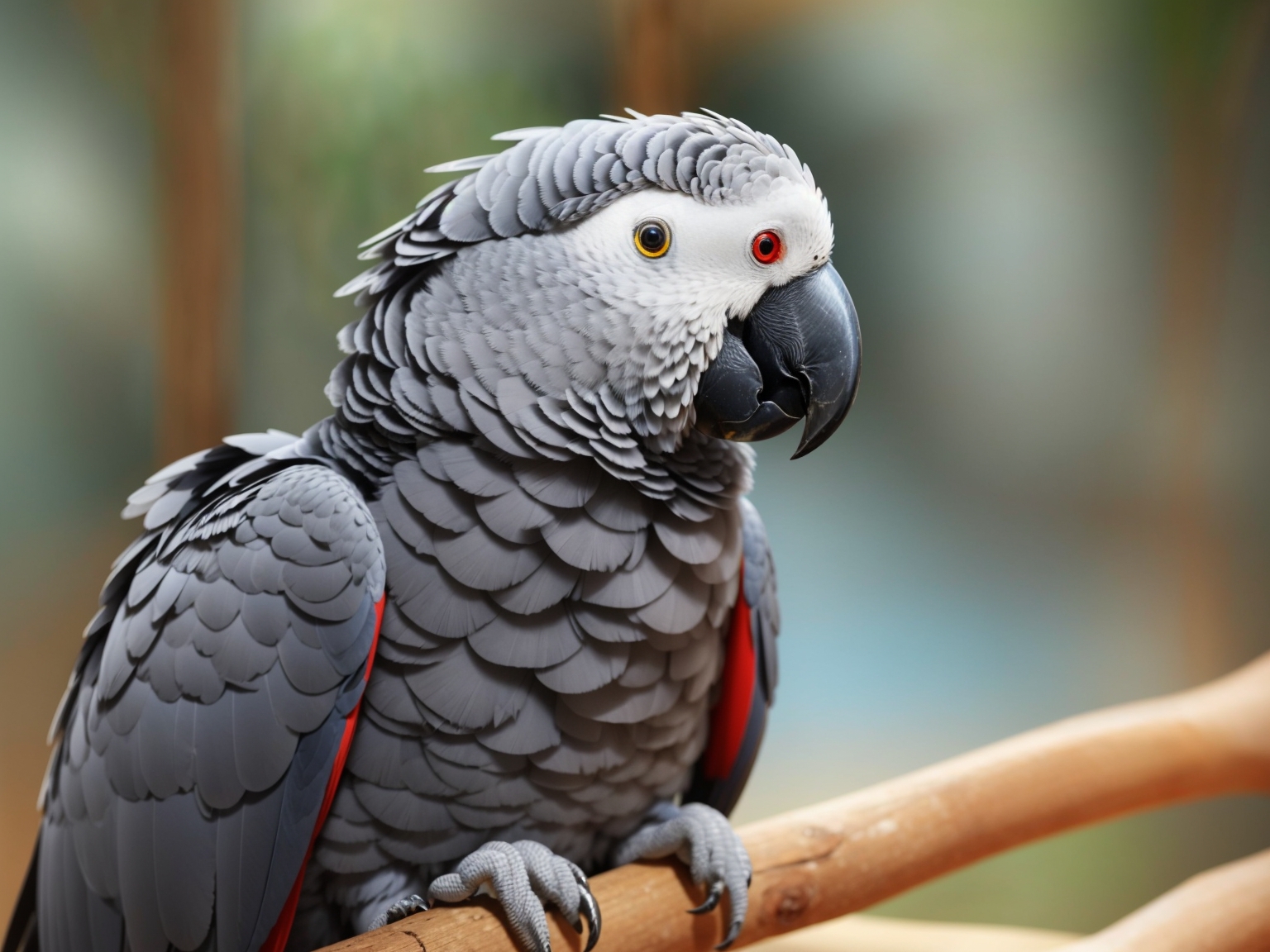
Challenges to Rainforest Regeneration
The challenges to rainforest regeneration are numerous and significant. Deforestation remains a major threat, as trees are cleared for agriculture, logging, and infrastructure development.
Additionally, climate change and its associated impacts, such as increased droughts and wildfires, pose further obstacles to the regrowth of rainforests.
Illegal hunting and poaching also disrupt the delicate balance of rainforest ecosystems. These challenges require urgent action and sustainable solutions to ensure the long-term survival and regeneration of rainforests.
African Grey Parrots: Seed Dispersers in the Rainforest
African Grey Parrots play a key role in seed dispersal within the rainforest.
Seed Dispersal by African Grey Parrots
Seed dispersal by African Grey Parrots is an essential ecological process in the rainforest. As these parrots feed on fruits and nuts, they inadvertently scatter the seeds throughout their range.
The seeds then have the opportunity to germinate and grow into new plants, contributing to the regeneration of the rainforest.
The parrots’ ability to travel long distances enhances the dispersal of seeds, allowing for greater biodiversity and the survival of plant species in different locations. By playing this role, African Grey Parrots help maintain the balance and health of the rainforest ecosystem.
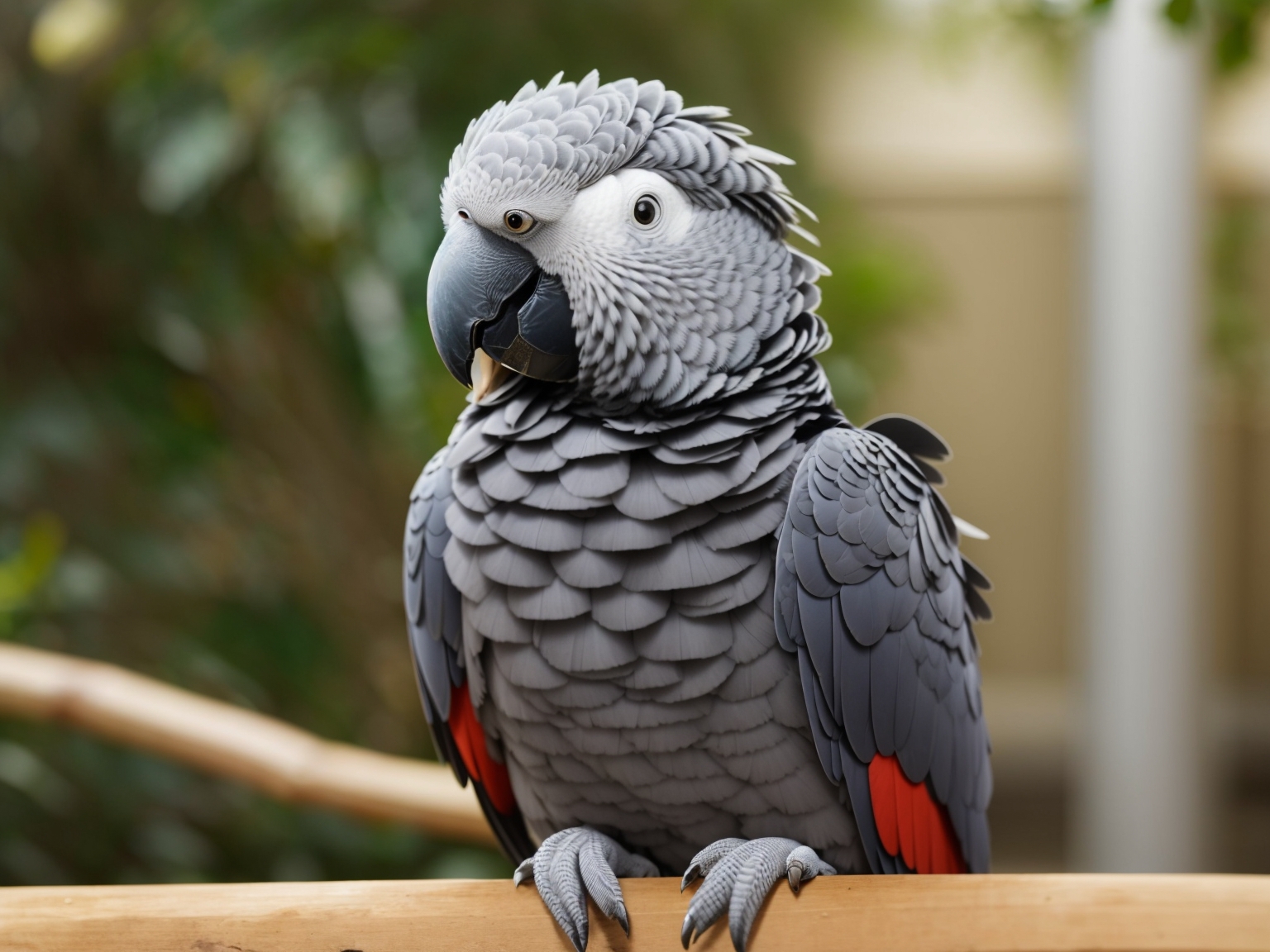
Role of African Grey Parrots in Rainforest Regeneration
African Grey Parrots play a vital role in rainforest regeneration through seed dispersal. As they feed on fruits, they inadvertently spread seeds throughout the forest.
These seeds then have the opportunity to grow into new trees and contribute to the overall health and biodiversity of the rainforest.
African Grey Parrots are essential for the process of seed dispersal, as they can travel long distances and reach areas that other animals may not be able to access. Their role in rainforest regeneration is crucial for maintaining the balance of ecosystems and ensuring the future survival of the rainforest.
Supporting the conservation of African Grey Parrots is an important step in protecting these amazing birds and the rainforest they help to regenerate.

The Unique Features of African Grey Parrots
African Grey Parrots possess extraordinary intelligence and cognitive abilities, making them stand out among other avian species. Additionally, their exceptional vocalization and communication skills set them apart in the avian world.
Intelligence and Cognitive Abilities of African Grey Parrots
African Grey Parrots are renowned for their exceptional intelligence and cognitive abilities.
They have the ability to mimic and understand human speech, with some individuals being able to learn hundreds of words and phrases.
These parrots also display problem-solving skills, such as using tools to obtain food.
They can solve complex puzzles and demonstrate a high level of learning and comprehension.
African Grey Parrots have been shown to possess an impressive memory, recognizing and recalling specific events or individuals over extended periods.
Their intelligence and cognitive abilities make them highly adaptable and capable of thriving in various environments.
Vocalization and Communication in African Grey Parrots
African Grey Parrots are known for their impressive vocalization and communication skills.
They have the ability to mimic and imitate various sounds, including human speech.
They can learn and repeat words and phrases with remarkable accuracy.
African Grey Parrots can also communicate through body language, such as raising their feathers or flapping their wings.
These communication abilities play a crucial role in their interaction with other parrots and their environment.
Conservation Efforts to Protect African Grey Parrots
To protect African Grey Parrots, conservation efforts focus on habitat preservation, anti-poaching measures, and raising awareness about the illegal pet trade.
Threats to African Grey Parrot Population
Threats to the African Grey Parrot population include habitat loss due to deforestation, illegal capture for the pet trade, and hunting for feathers and traditional medicine. These activities greatly impact their numbers and jeopardize their survival in the wild.
Conservation efforts are crucial to protect this species.

Conservation Strategies and Initiatives
Conservation strategies and initiatives for African Grey Parrots focus on protecting their habitat, promoting sustainable practices, and combatting illegal wildlife trade.
Measures include establishing protected areas, raising awareness about the importance of conservation, supporting local communities, and enforcing laws against poaching and trafficking.
Cooperation between governments, conservation organizations, and local communities is crucial for the long-term survival of African Grey Parrots.
FAQs about African Grey Parrots and Rainforest Regeneration
How do African Grey Parrots contribute to rainforest regeneration?
African Grey Parrots contribute to rainforest regeneration through seed dispersal. These intelligent birds consume a variety of fruits and nuts, and as they fly and move between trees, they unintentionally drop and scatter seeds in different areas of the forest floor.
This helps in the natural regeneration of the forest by allowing new plants to grow and replenish the ecosystem.
What are the other species involved in rainforest regeneration?
Other species involved in rainforest regeneration include various trees, plants, fungi, and animals. Trees like the kapok, fig, and mahogany play a crucial role in providing shade and creating a habitat for other organisms.
Plants and fungi provide nutrients to the soil, facilitating growth.
Animals like birds, mammals, and insects contribute to seed dispersal, pollination, and nutrient cycling. Each of these species plays a unique part in the complex web of rainforest regeneration.
How can we support the conservation of African Grey Parrots?
To support the conservation of African Grey Parrots, we can take the following steps:
- Promote sustainable harvesting: Encourage legal and sustainable practices for capturing and trading African Grey Parrots, such as using captive breeding programs instead of capturing wild birds.
- Protect their habitat: Support organizations that work to preserve and restore the rainforest habitats where African Grey Parrots live. This includes advocating for the conservation of forests and preventing deforestation.
- Raise awareness: Educate others about the importance of African Grey Parrots to the ecosystem and the threats they face. Spread awareness through social media, community events, and educational programs.
- Foster responsible ownership: If you’re considering getting an African Grey Parrot as a pet, ensure that it is obtained from licensed breeders and not illegally captured from the wild. Provide a suitable environment and proper care for the bird.
- Report illegal activities: If you come across any illegal trade or poaching of African Grey Parrots, report it to the appropriate authorities or local conservation organizations. They can take action to address the issue.
- Support research and conservation initiatives: Contribute to organizations that conduct research on African Grey Parrots and support conservation efforts. This can include donating funds, volunteering, or participating in citizen science projects.
Remember, every small action can make a difference in the conservation of African Grey Parrots and their habitats.
By supporting these efforts, we can help ensure the survival of this magnificent species for future generations.
Final Verdict
African Grey Parrots play a crucial role in rainforest regeneration as seed dispersers.
Their habitat, diet, and behavior are all intricately connected to the ecosystem of the rainforest.
Through their intelligence, vocalization, and communication skills, they help in the dispersal of a wide variety of seeds, contributing to the growth and diversity of plant species.
However, African Grey Parrots face numerous threats, including habitat loss and the illegal pet trade.
To support the conservation of these parrots and the regeneration of rainforests, it is essential to raise awareness, enforce conservation strategies, and support initiatives that protect their natural habitats.
By doing so, we can ensure the survival of African Grey Parrots and the ecological balance they maintain in the rainforest.


